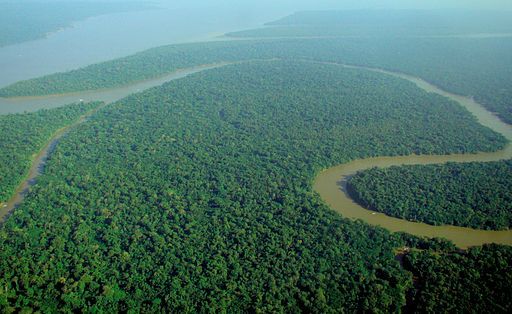With our loves of travel and of learning of other cultures and food, the Amazon beckoned and we answered.
Brazil itself sounded fascinating, but the thought of cruising the Amazon and Rio de Janeiro was even more exciting.
We flew into Sao Paulo, Brazil the most populated city in South America – and the entire southern hemisphere – with 20 million inhabitants.
Our first viewing of Iguazu falls was awe-inspiring. The falls are composed of what are considered to be 275 separate falls forming a river. Iguazu falls are much taller than and two times as wide as Niagara Falls. The falls create a border between Brazil and Argentina, and are best viewed from Brazil. If you look down the river you can see Paraguay.
We flew to Manaus, which is the capital city of Brazil’s Amazonas State. The city is a gateway to the Amazon River and is nearly 2,000 kilometers north of Brazil’s federal capital, Brasilia. The chief architect of Brasilia was Oscar Niemeyer who also designed the U.N. building in New York City. The government of Brazil is democratic like the U.S.
It was hot in Manaus, nevertheless we boarded the Oberstar ship to explore the second largest river in the world. With no bridge crossing the river, the only way to travel the river is by boat. Those living on the river must travel even as far as Peru by boat.
While the Nile is the longest river in the world, the Amazon River is the largest in terms of the siege of its watershed, volume of water, and number of tributaries fed. The water discharges into the Atlantic Ocean 4,000 miles from the river’s start in Peeves. Fresh water from the river can be found 200 miles out in the Atlantic. The Amazonia or Amazon basin is 9 times the size of Texas.
The rainy season, January through June, is when the river will rise 45 feet. June through December is the dry season. There are 400 islands in the river, which get covered during the rainy season. The trees on these islands are completely covered with water, but they have acclimated to the water and do not die, unlike many trees that will die if submerged or exposed to too much water.
We went trekking (hiking) in the rainforests for several days and learned about the plants that the natives use for vaccines and other medicinal purposes, such as athletes’ foot and headaches, and that pharmaceutical companies are investigating to perhaps make medicines for other maladies. We also learned how to make twine and fences and many other things from native plants and bushes.
We fished for piranhas, whose teeth grow facing backwards and can shred flesh from bone in a few seconds. However, they are basically vegetarians. We did use raw meat to fish, but the native men removed the fish and threw the line back into the river.
One of our favorite things was feeding the freshwater pink dolphins. They primarily eat fish and live in groups of about seven to nine.
Another interesting “creature” in the jungle was the leaf-cutter ant. The female ant harvests a leaf fragment and carries it on her back to her underground colony. This journey is equivalent to a human running the four-minute mile for 30 miles while carrying 500 pounds. It seems impossible, but is true, and we saw leaf-cutter ants in action.
Another fun thing was caiman hunting at night. These are like a small crocodile only about three feet in length.
While visiting several native villages, we watched the making of tapioca cakes. This involved digging the roots from the water, then soaking them for several days to remove the cyanide from them, and finally drying and grinding the root to a powder. The tapioca powder is used to make cakes, which are baked or fried and eaten with butter or syrup. They are very good.
We were privileged to visit indigenous villages. We danced with natives and admired the jewelry made by the native women using seeds and wood from the forest. In one village, the only child was a darling little girl. But as only a boy can be chief, it could be a while for the next generation to get a new chief.
Our trip ended shortly after. We watched the dark Rio Negro and the opaque brown Amazon merge. It was such a lovely sight at 5:30 a.m.
Our wonderful trip ended with a flight back to Miami. I came home with pictures and memories of pieces untouched by modernization, wildlife and untold beauty.









